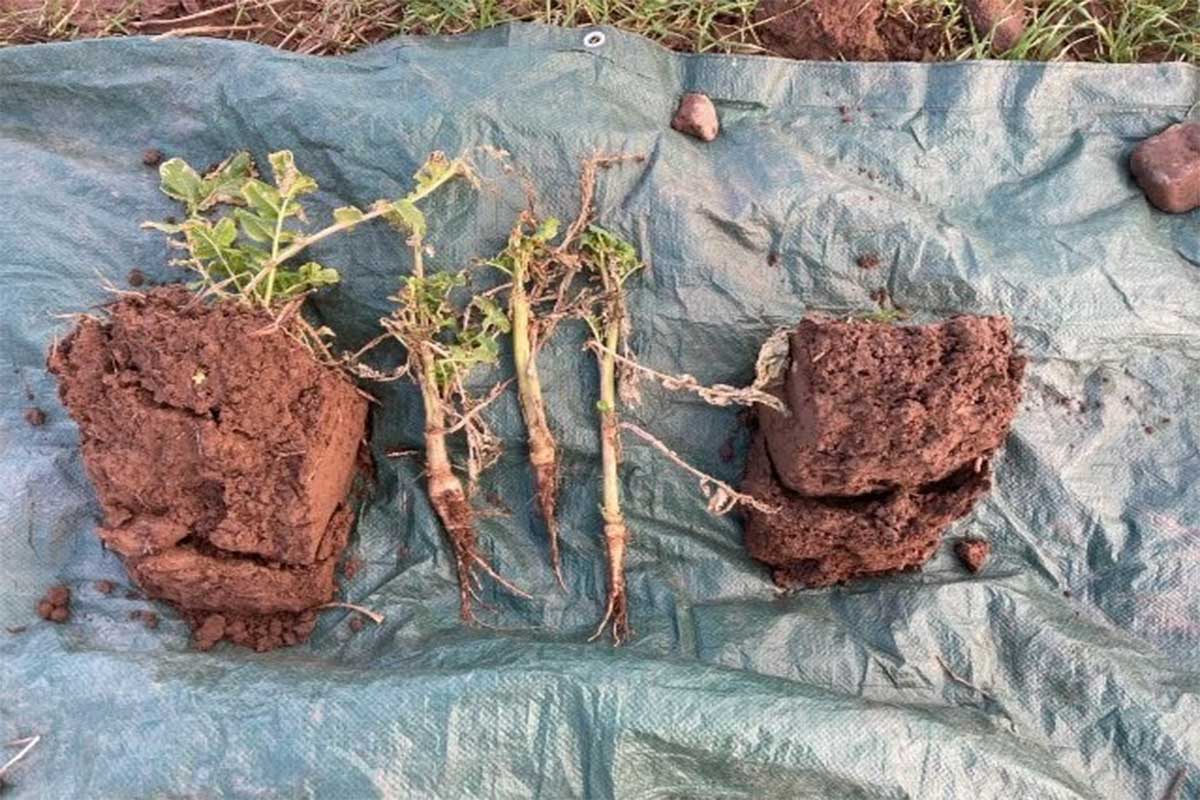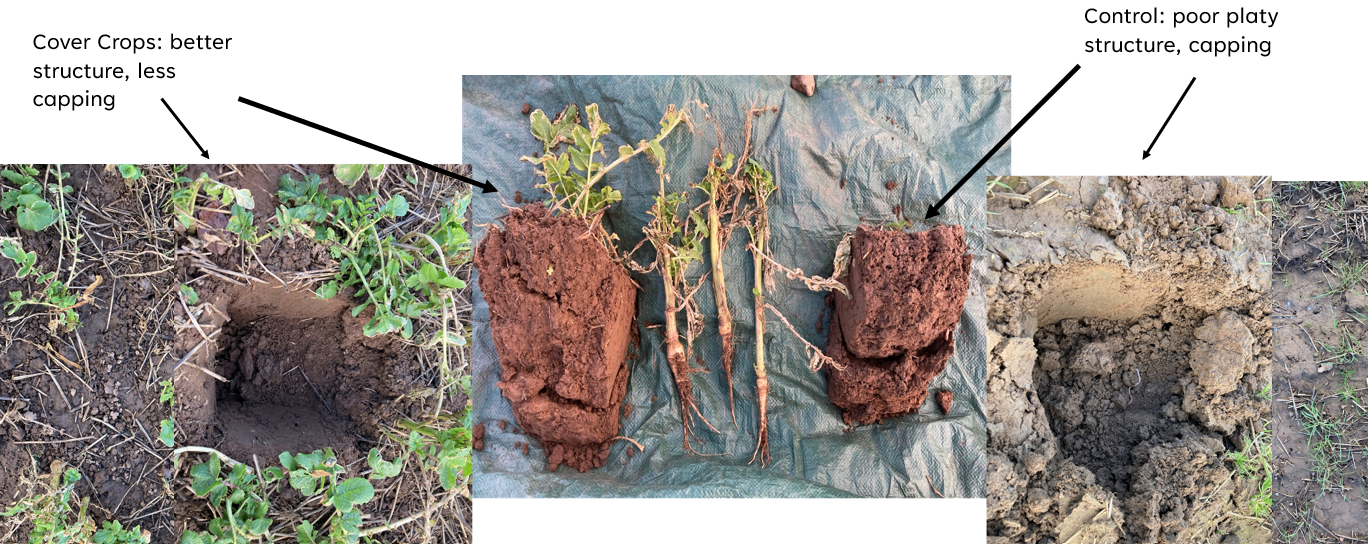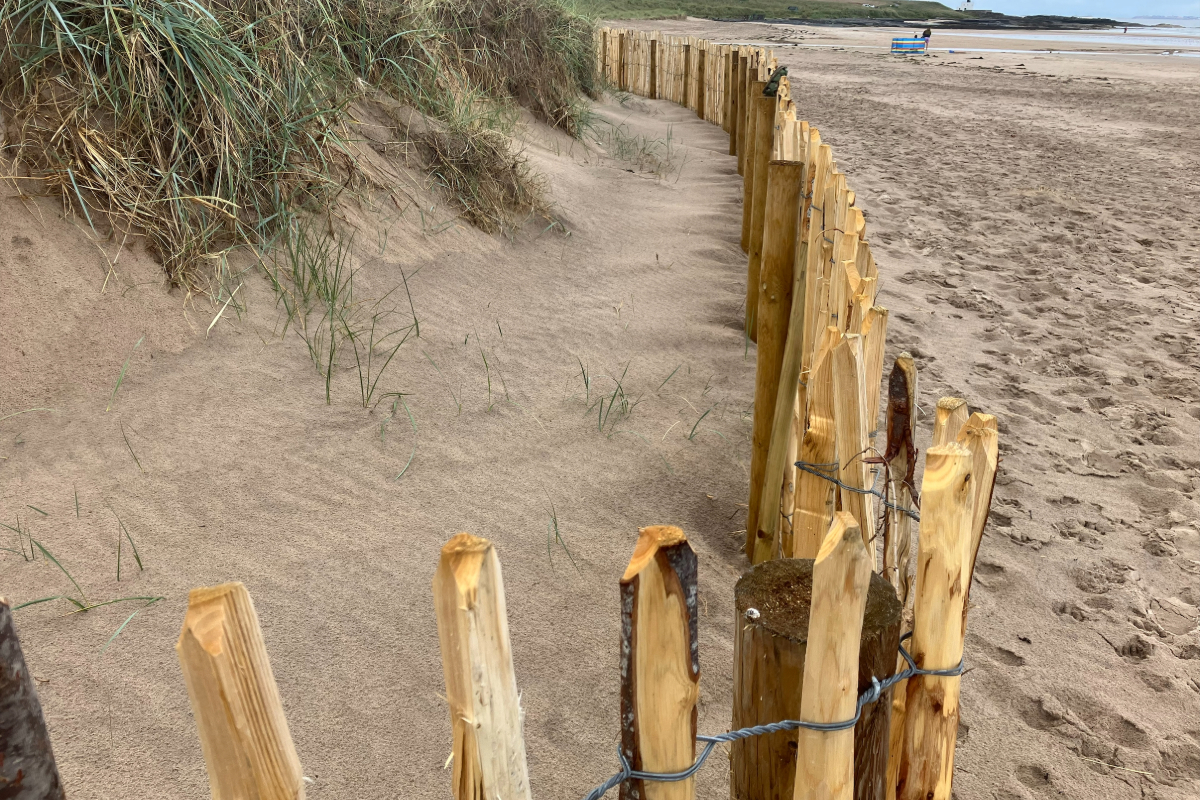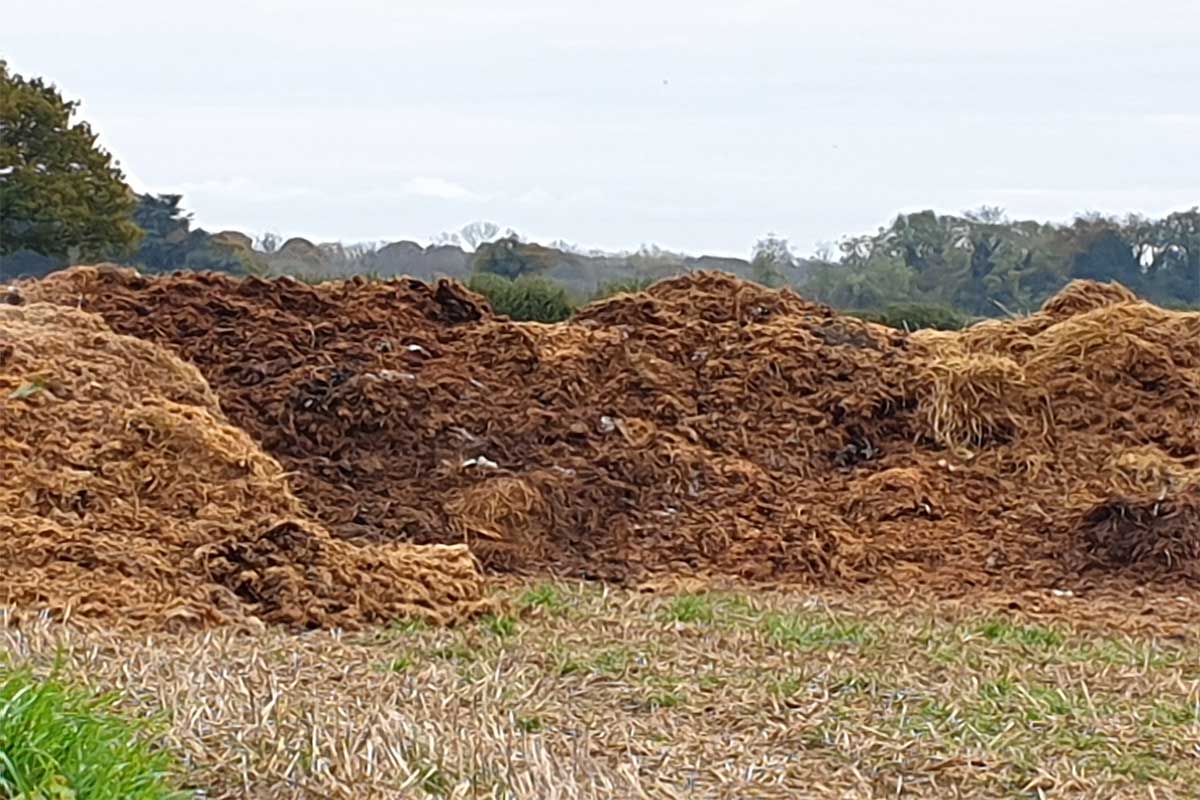
Cover crops are plants that are used to cover and fortify soil rather than be harvested. Research into the use of cover crops has shown that they significantly improve soil structure and soil biology, reduce soil erosion, increase water infiltration, improve weed control, increase soil organic matter, and optimise soil nutrient management. They can be used in fallow periods (autumn and winter) or also during periods of heavy rain (e.g., wet spring) and have been found to significantly improve subsequent crops. However, in the WADER project area cover crops are not widely adopted.
At the start of the project, before the use of cover crops, 15cm cores of soil were collected and analysed. During winter 2023, WADER planted a mix of brassicas on land that is normally left bare before the drilling of spring barley in March. This will be repeated for three years. The soil will be re-tested each year in February (2024-2026) after the cover crop is terminated. Soil will be re-tested once more in July (2024-2026) when the Spring Barley is harvested. This detailed sampling will capture any positive change in soil condition. Cover crop and harvested crop leaves and grains will also be analysed for nutrient content.









